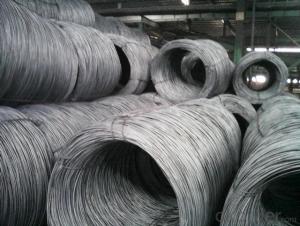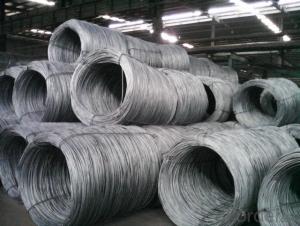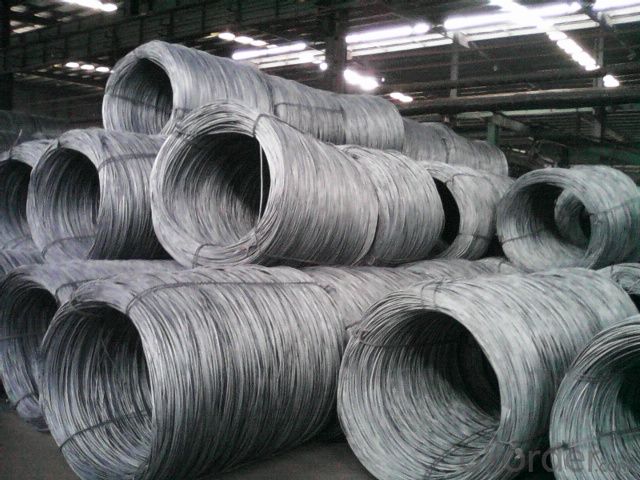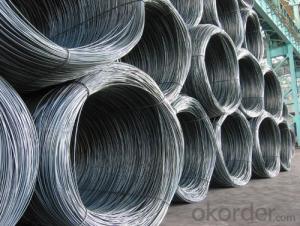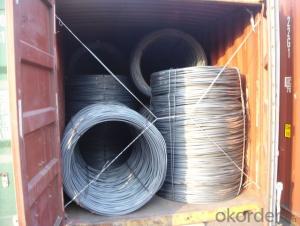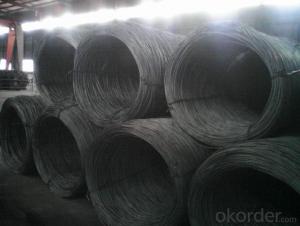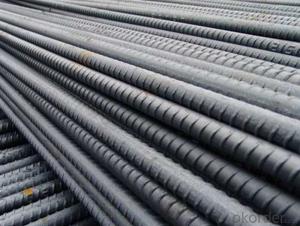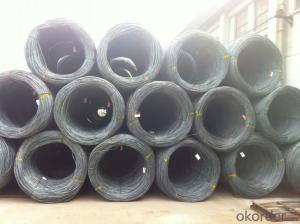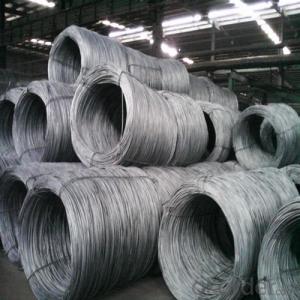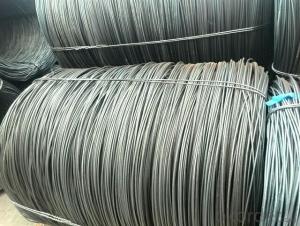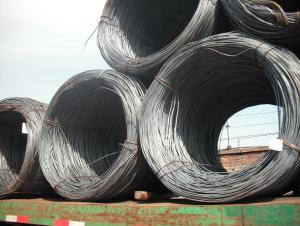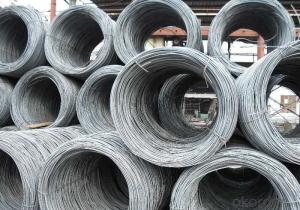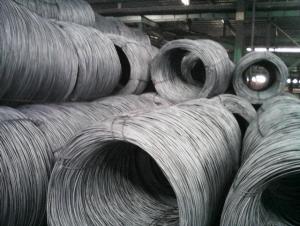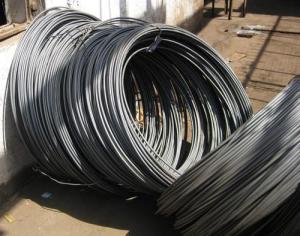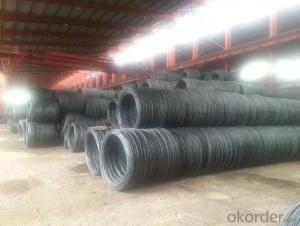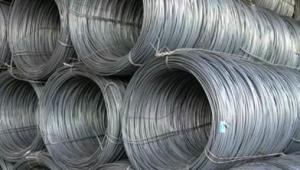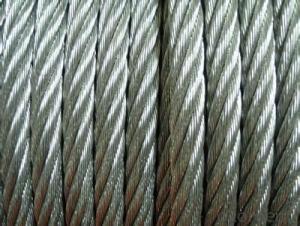Hot rolled wire rod SAE1008
- Loading Port:
- China Main Port
- Payment Terms:
- TT or LC
- Min Order Qty:
- -
- Supply Capability:
- -
OKorder Service Pledge
OKorder Financial Service
You Might Also Like
Product Description:
OKorder is offering Hot rolled wire rod SAE1008 at great prices with worldwide shipping. Our supplier is a world-class manufacturer of steel, with our products utilized the world over. OKorder annually supplies products to European, North American and Asian markets. We provide quotations within 24 hours of receiving an inquiry and guarantee competitive prices.
Steel Grade: Q195/235, SAE1006-1018B Standard: ASTM, GB
Diameter: 5.5mm, 6.5mm, 7mm,8mm,9mm,10mm,12mm,14mm
Type: in coil, coil weight around 2MT Alloy or Not: Alloy
Technique: Hot Rolled Place of Origin: China Mainland
Surface: round, no twisted, light and smooth
Chemical Composition: (Please kindly find our chemistry of our material based on Q195、Q235A and Q235B as below for your information)
Trademark | Rank | Chemical composition (quality score) % | ||||||||
C | Si | Mn | S | P | ||||||
| ≤ |
| ≤ | ≤ | ||||||
Q195 |
| 0.06-0.12 | 0.30 | 0.25 | 0.050 | 0.045 | ||||
Q235 | A | 0.14-0.22 | 0.30 | 0.30-0.65 | 0.050 | 0.045 | ||||
Q235 | B | 0.12-0.20 | 0.30 | 0.30-0.70 | 0.045 | 0.045 | ||||
After hot-rolled the products shaped into coil and delivery as finished product, including round, square, rectangular, hexagonal and so on. Since most of the products are round, it is generally called wire rod. Carbon steel wire rod is widely used in construction and manufacturing. Carbon steel wire rod is mainly used for reinforcement of reinforced concrete and welded structure or reprocessed (roberts , nail, etc.) materials, especially used to produce wire drawing, welding electrode, nails, spring, electronic, precise machinery parts and so on.
Product Applications:
Hot rolled wire rod SAE1008 are ideal for structural applications and are widely used in the construction of buildings and bridges, and the manufacturing, petrochemical, and transportation industries.
Product Advantages:
OKorder's Hot rolled wire rod SAE1008 are durable, strong, and resist corrosion.
Main Product Features:
· Premium quality
· Prompt delivery & seaworthy packing (30 days after receiving deposit)
· Corrosion resistance
· Can be recycled and reused
· Mill test certification
Product Specifications:
Diameter: 5.5mm, 6.5mm, 7mm,8mm,9mm,10mm,12mm,14mm
FAQ:
Q1: What makes stainless steel stainless?
A1: Stainless steel must contain at least 10.5 % chromium. It is this element that reacts with the oxygen in the air to form a complex chrome-oxide surface layer that is invisible but strong enough to prevent further oxygen from "staining" (rusting) the surface. Higher levels of chromium and the addition of other alloying elements such as nickel and molybdenum enhance this surface layer and improve the corrosion resistance of the stainless material.
Q2: How do we guarantee the quality of our products?
A2: We have established an advanced quality management system which conducts strict quality tests at every step, from raw materials to the final product. At the same time, we provide extensive follow-up service assurances as required.
Q3: Can stainless steel rust?
A3: Stainless does not "rust" as you think of regular steel rusting with a red oxide on the surface that flakes off. If you see red rust it is probably due to some iron particles that have contaminated the surface of the stainless steel and it is these iron particles that are rusting. Look at the source of the rusting and see if you can remove it from the surface.
Images:

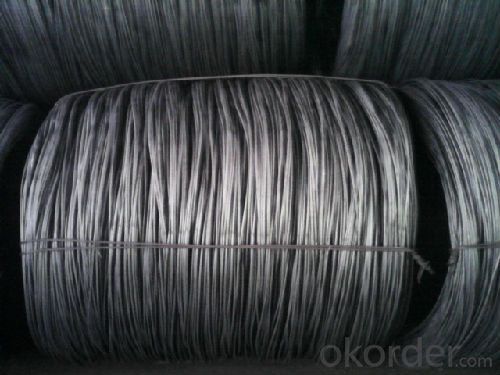
- Q: How is steel wire rod different from other types of steel products?
- Steel wire rod is different from other types of steel products because it is a semi-finished product that is primarily used for further processing into various steel wire and steel wire products. Unlike other steel products, such as bars or sheets, steel wire rod is typically hot-rolled and has a round cross-section. Its specific composition and mechanical properties are tailored to meet the requirements of wire drawing, making it suitable for manufacturing a wide range of wire-based products, such as nails, wires, cables, springs, and reinforcement materials.
- Q: How does steel wire rod compare to other materials for wire production?
- Steel wire rod is widely regarded as one of the most suitable materials for wire production due to its exceptional strength, durability, and versatility. Compared to other materials, such as aluminum or copper, steel wire rod offers superior tensile strength and resistance to corrosion, making it ideal for various applications. Additionally, steel wire rod can be easily shaped, welded, and drawn into different wire sizes and forms, ensuring its compatibility with diverse industries like construction, automotive, and manufacturing. Its cost-effectiveness and widespread availability further contribute to its preference over other materials in wire production.
- Q: How is steel wire rod used in the manufacturing of wire cages?
- Steel wire rod is used in the manufacturing of wire cages as it serves as the primary raw material for making the wires that form the structure of the cages. The steel wire rod is processed through various steps such as drawing, annealing, and coating to obtain the desired thickness, strength, and corrosion resistance. These wires are then bent, twisted, and welded to create the framework of the wire cages, providing strength, stability, and containment for various applications such as animal enclosures, storage containers, and security barriers.
- Q: What are the different types of corrosion resistance tests conducted on steel wire rod?
- There are several different types of corrosion resistance tests that are commonly conducted on steel wire rods. These tests aim to determine the ability of the wire rod to resist corrosion in various environments. Some of the commonly used corrosion resistance tests for steel wire rods include: 1. Salt Spray Test: This test involves subjecting the wire rod to a continuous salt spray environment. The rod is placed in a chamber where it is exposed to a saline solution mist. The test measures the time it takes for the wire rod to show signs of corrosion, such as rust formation. 2. Humidity Test: In this test, the wire rod is subjected to a high humidity environment for a specific period of time. The humidity level is controlled, and the wire rod is evaluated for any signs of corrosion, such as oxidation or surface discoloration. 3. Cyclic Corrosion Test: This test involves subjecting the wire rod to repeated cycles of different corrosive environments, such as salt spray, humidity, and dry heat. The rod is exposed to these conditions in a controlled manner, and its resistance to corrosion is assessed based on the appearance and extent of corrosion after each cycle. 4. Electrochemical Corrosion Test: This test measures the corrosion potential and corrosion current of the wire rod using electrochemical techniques. The wire rod is immersed in a corrosive solution, and its response to an applied electrical potential is evaluated. This test provides insights into the corrosion behavior and performance of the wire rod. 5. Acid Resistance Test: This test evaluates the wire rod's resistance to acid corrosion. The rod is immersed in an acidic solution for a specified period of time, and its weight loss or surface appearance is measured to assess the extent of corrosion. 6. Pitting Corrosion Test: Pitting corrosion is a localized form of corrosion that can be particularly damaging. This test involves exposing the wire rod to a corrosive environment where pitting corrosion is likely to occur. The rod is then examined for the presence and extent of pits using visual inspection or microscopy. These are just a few examples of the corrosion resistance tests conducted on steel wire rods. Each test provides valuable information about the wire rod's ability to withstand corrosion in specific conditions, helping to ensure its suitability for various applications.
- Q: Can steel wire rod be used for reinforcement purposes?
- Yes, steel wire rod can be used for reinforcement purposes. It is commonly used in construction and concrete structures to provide added strength and stability. The high tensile strength and durability of steel wire rod make it an ideal choice for reinforcement applications.
- Q: What are the standard tolerances for steel wire rod diameter?
- The standard tolerances for steel wire rod diameter can vary depending on the specific industry and application requirements. However, there are generally accepted tolerances that are commonly used in the steel wire manufacturing industry. In general, the standard tolerances for steel wire rod diameter range from +/- 0.002 inches to +/- 0.010 inches. These tolerances ensure that the diameter of the wire rod falls within a specific range, allowing for variations in the manufacturing process while still meeting the required specifications. The specific tolerance range may be influenced by factors such as the intended use of the wire, the manufacturing process used, and the specific industry standards. For example, wire rods used in high precision applications, such as medical devices or aerospace components, may require tighter tolerances to ensure accuracy and reliability. It is important to note that these standard tolerances are subject to change based on the specific requirements of the customer or industry. Manufacturers often work closely with customers to determine the appropriate tolerances for their specific applications, taking into consideration factors such as the desired level of precision, the material properties of the wire rod, and any regulatory or industry standards that must be met. Overall, the standard tolerances for steel wire rod diameter provide a guideline for ensuring the dimensional accuracy and consistency of the wire rods, while allowing for reasonable variations during the manufacturing process.
- Q: What are the common applications of low alloy steel wire rod?
- Low alloy steel wire rod is commonly used in various applications such as construction, automotive, aerospace, and manufacturing industries. It is often used for the production of high-strength fasteners, springs, cables, welding electrodes, and other components that require excellent strength, durability, and resistance to wear and corrosion.
- Q: How are steel wire rods used in the manufacturing of fasteners?
- Fasteners, including bolts, screws, and nails, rely on steel wire rods as a vital component in their production. Steel wire rods serve as the raw material, imparting the strength and durability required for these fasteners. The manufacturing process commences with the utilization of steel wire rods, typically made from carbon or alloy steel. These rods undergo a hot rolling process, where they are heated and passed through a series of rollers to achieve the desired shape and size. The resulting wire rods then undergo further processing to meet the specific requirements for fastener production. One of the primary applications of steel wire rods in fastener manufacturing is for the production of bolts and screws. The wire rods are cut into specific lengths and undergo various operations, such as heading, threading, and heat treatment. Heading involves shaping the head of the bolt or screw, while threading creates the ridges or grooves necessary for proper installation. Heat treatment is often employed to enhance the strength and hardness of the fastener. Steel wire rods are also utilized in the production of nails. The rods are drawn to the desired diameter and cut into appropriate lengths. The ends of the wire are then sharpened, and the nails are formed through a process called pointing. Pointing involves creating a sharp tip on one end of the wire, facilitating easy penetration into materials. In addition to bolts, screws, and nails, steel wire rods find use in the production of other fasteners, such as rivets, cotter pins, and clips. These fasteners are essential across various industries, including construction, automotive, aerospace, and furniture. Overall, the significance of steel wire rods in fastener manufacturing cannot be overstated. They provide the necessary strength, durability, and adaptability required for joining and securing objects together. Serving as the foundation for the production of various fastener types, steel wire rods enable the construction of robust and reliable structures.
- Q: What are the main factors affecting the product consistency of steel wire rod?
- The main factors affecting the product consistency of steel wire rod include the quality of raw materials used, the manufacturing process utilized, the control and monitoring of temperature and pressure during production, and the maintenance and calibration of equipment. Additionally, factors such as the composition of the steel alloy, the presence of impurities, and the level of precision in the wire drawing process can also influence the consistency of the final product.
- Q: What are the different types of steel wire rod rolling processes?
- There are several different types of steel wire rod rolling processes, including hot rolling, cold rolling, and warm rolling. Each process has its own advantages and is used for specific applications. Hot rolling involves heating the steel rod and then passing it through a series of rollers to reduce its diameter and increase its length. Cold rolling, on the other hand, is performed at room temperature and results in a smoother finish and increased strength. Warm rolling is a combination of hot and cold rolling, where the steel rod is heated to a lower temperature than in hot rolling but higher than in cold rolling. This process offers a balance between strength and surface quality.
Send your message to us
Hot rolled wire rod SAE1008
- Loading Port:
- China Main Port
- Payment Terms:
- TT or LC
- Min Order Qty:
- -
- Supply Capability:
- -
OKorder Service Pledge
OKorder Financial Service
Similar products
Hot products
Hot Searches
Related keywords
